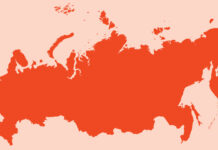Any time there is a new U.S. president, major powers set out to test him and lay the groundwork for future bargaining in potential conflicts. Occasionally, the United States opens the bidding. Such was the case when Washington, through its new secretary of state, Antony Blinken, accused Beijing of human rights violations in Xinjiang and Hong Kong and of various cybercrimes. Beijing responded by calling Washington an enormous human rights violator, adding that it does not speak for the world and should not claim to. This is the tone for a showdown, not for a pleasant introduction.
All this took place ahead of a meeting that was doomed to fail. Before the meeting could take place, Blinken and Jake Sullivan, the U.S. national security adviser, spent time in South Korea and Japan, both of which oppose China and, despite being longtime allies, have specific gripes with the U.S. (Seoul over the cost of hosting U.S. troops and Tokyo over enhancing its military to face China.) Both meetings went well. Elsewhere, talks were held with the Quad, a security dialogue comprising the U.S., Japan, Australia and India, all of which are naval powers hostile to China. In other words, the U.S. held a series of meetings with its anti-China allies just before it met with China.
As the talks were in the process of collapsing, President Joe Biden was asked in an interview whether Russian President Vladimir Putin was a killer. He said he was. It’s not something you normally say about the head of a major power, even if it’s true. Biden had plenty of time to recant his statement had he wanted to, but he didn’t. The Russians were upset and recalled their ambassador. Putin essentially said, “it takes one to know one.”
I see this as Biden beating China and Russia to the punch. He and his team wanted to let them know – and, indirectly, let the American public know – that he’s not going to be a weak president. Russia’s and China’s responses, of course, were meant for the United States – as well as for U.S. allies who might doubt its strength.
In diplomacy, talk is cheap, and opening acts such as these matter little. Some have said it sets the tone for the next four years, but it doesn’t. It sets the stage for the first month, after which everyone, having the opportunity to sniff and growl at each other, settle into reality. And reality militates against drastic action. The U.S. is China’s biggest customer, which Beijing cannot afford to lose. It is much easier to acquire needed goods in other markets than to sell in other markets. As for Russia, it could pick a fight in, say, Ukraine or Moldova, but doing so would create its worst-case scenario: NATO, Germany and other countries amassing forces in Eastern Europe. So let’s rule that out too.
Russia’s and China’s options are obviously more complicated than what I lay out here, but they are also hemmed in by these realities. The meetings held by the U.S. prior to the meeting with China were meant to remind the Chinese of as much, that it should not overestimate its strength or underestimate its strategic isolation. Calling Putin a killer was meant to warn Putin against covert operations, and to let him know that Washington knows how weak Russia is and doesn’t care what Russia thinks.
The risk is that Biden is wrong and that Russia and China are not as weak as he thinks. In my view, they are in no position to challenge the United States or attempt military action. But it is one thing to write and another to bear the burden of action. The question is what sort of action the Russians and Chinese might take. The logical solution is to form an alliance. The question is what it would look like and whether it would matter.
An economic alliance would be ineffective. Russia and China trade with each other without friction. Neither would have a sufficient market to support the other’s needs. There is a symmetry in that Russia needs Chinese consumer technology and China needs Russian raw materials, but each is already getting what it needs and providing what it can manage. An economic alliance would perhaps formalize existing relations and perhaps increase trade but would not make either invulnerable to third-party pressures.
A military alliance is similarly problematic. Neither Russia nor China can support the other’s strategic needs. The primary threat to China is naval. Russia’s naval capacity is limited, and its major Asian port, Vladivostok, requires passage through maritime routes that are controlled by Japan and the United States. Russia would be contained by the same coalition threatening China. The threats to Russia are primarily terrestrial. China’s ability to send forces to areas of Russian concern is limited, and Russia has no pressing need for additional ground troops. There are areas in which one could help the other, such as military hardware or cyberwarfare, but that isn’t a real alliance.
Could a Russo-Chinese alliance launch a naval assault in the east and a ground attack in the west simultaneously? Perhaps. But doing so, while politically shocking, would not weaken either front because it would be engaging naval forces not needed in the west and ground forces not needed in the east. It may also fail. If it succeeded, it would trigger existential (nuclear) choices or create unshakeable anti-Russia and anti-China alliances.
The more logical and less risky move is for China to reach a political and economic agreement with the United States, and for Russia to do the same, at least with Europe. But to do this, each must be convinced that the U.S. is not interested in a settlement. Showing a lack of interest is the foundation of any bargaining position. The best read is that the U.S. knows that bargaining is coming and is therefore posing as hostile to it. The Chinese have called the Americans’ bet. The Russians shortly will. At any rate now is the time for insults and threats, before we get down to business that may fail regardless of all this.







